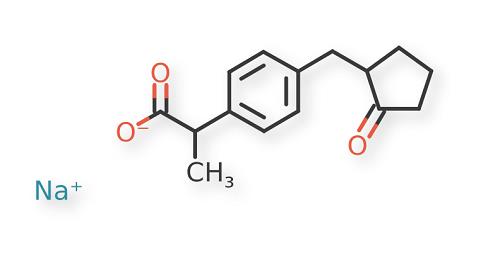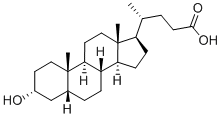Lithocholic acid: Chemical synthesis and Biological Functions
Feb 7,2025
Basic Introduction
Lithocholic acid, also known as 3α-hydroxy-5β-cholan-24-oic acid or LCA, is a bile acid that acts as a detergent to solubilize fats for absorption. Bacterial action in the colon produces LCA from chenodeoxycholic acid by reduction of the hydroxyl functional group at carbon-7 in the "B" ring of the steroid framework. It has been implicated in human and experimental animal carcinogenesis. Preliminary in vitro research suggests that LCA selectively kills neuroblastoma cells, while sparing normal neuronal cells and is cytotoxic to numerous other malignant cell types at physiologically relevant concentrations. Dietary fiber can bind to lithocholic acid and aid in its excretion in stool; as such, fiber can protect against colon cancer. Lithocholic acid (and LCA acetate and LCA propionate) can activate the vitamin D receptor without raising calcium levels as much as vitamin D itself. LCA binds with 20 μM affinity to the human membrane enzyme NAPE-PLD, enhancing dimer assembly and enabling catalysis. NAPE-PLD catalyzes the release of anandamide and other N-acylethanolamines (NAE) from the membrane precursor N-acylphosphatidylethanolamine (NAPE). NAPE-PLD facilitates crosstalk between bile acid signals and lipid amide signals. Lithocholic acid has been reported to have anti-aging effects in yeast, and more recently fruit flies, nematodes, and mice.
Chemical synthesis
Hydrogenation reduction: A solution of 2 (1.0 g, 2.51mmol) and t-BuONa (482 mg, 5.0mmol) in i-PrOH (20mL) in an autoclave was hydrogenated in the presence of Raney Ni (1.0 g) under H2 (4.0MPa) for 48 h at 90°C. After cooling, the reaction mixture was acidified to pH 5 with AcOH and the catalyst was removed by filtration through celite, then the filtrate was evaporated under reduced pressure. The residue was poured into H2O (30mL) and extracted with AcOEt (20mL 3). The organic layer was washed with brine, dried with anhydrous Na2SO4, filtered and concentrated. The residue was purified by silica gel chromatography (petroleum ether/AcOEt, 2/1, v/v) to give LCA, 840mg, 89%, white powder, mp:185-186°C (185-187 C).25 IR: (cm1) 3600, 1710, 1039. 1H NMR (500MHz, DMSO-d6) d11.93 (s, 1H), 4.43 (d, J3.6Hz, 1H), 3.41-3.33 (m, 1H), 2.25-2.20 (m, 1H), 2.12-2.07 (m,1H), 1.92 (d, J10.8Hz, 1H), 1.80-1.78 (m, 2H), 1.69-1.64 (m, 2H), 1.62-1.58(m, 1H),1.55-1.49 (m, 2H), 1.36-1.29 (m, 7H), 1.25-1.14 (m, 6H), 1.09-1.02 (m, 4H), 0.92-0.90 (m,1H), 0.87 (t, J3.1Hz, 6H), 0.61 (s, 3H). 13C NMR (125MHz, DMSO-d6) d 175.30, 70.32,56.51, 56.00, 42.73, 42.00, 40.43, 40.12, 36.74, 35.85, 35.62, 35.29, 34.66, 31.17, 31.13, 30.83,28.18, 27.36, 26.62, 24.31, 23.72, 20.88, 18.58, 12.31. HRMS(ESI): calcd for C24H40NaO3[MNa], 399.2870, found 399.2885, in accordance with the reference spectrum of LCA.25Anal. Calcd for C24H40O3: C, 76.55; H, 10.71. Found: C, 76.43; H, 10.96.

The Effect of Lithocholic Acid on the Gut-Liver Axis
Bile acids (BAs) have been shown to play an irreplaceable role in many diseases. The size and composition of the BA pool is the target for the treatment of a series of hepatoenteric diseases including inflammatory bowel disease (IBD), primary biliary cholangitis (PBC) and non-alcoholic steatohepatitis (NASH). Lithocholic acid (LCA), also known as 3α-hydroxy-5β-cholan-24-oic acid, is a monohydroxy BA produced from chenodeoxycholic acid (CDCA) or ursodeoxycholic acid (UDCA) by the action of intestinal bacteria. Lithocholic acid acts as a detergent to solubilize fat for absorption in intestine, but is considered to be toxic for hepatocytes. Particularly, Lithocholic acid has also been considered to be a carcinogen, high concentrations of Lithocholic acid induce oxidative stress and DNA damage, and promote tumor development by inhibiting the action of DNA repair enzymes and promoting the proliferation of cells. Contrary to the previous reports, recent studies revealed that LCA might be a protector in restraining hepatic and intestinal inflammation. Some other studies have found that Lithocholic acid also potentiates anti-aging and anti-tumor effects. For example, galactosylated poly (ethyleneglycol)-LCA, a nanoparticle formulation can selectively induce apoptosis in hepatocellular carcinoma cells without adverse effects on normal liver cells. Many natural extracts from plants or animals can regulate intestinal microbiota, BA metabolism and related signaling pathways. Recent studies have shown that natural components are involved in the regulation of Lithocholic acid production, detoxification and related signaling pathways. For example, grape seed proanthocyanidin and polyphenol extracts from pomegranate are reported to promote the production of Lithocholic acid. Glycyrrhizin and oleanolic are found to accelerate Lithocholic acid detoxification by up-regulating the expression of detoxification enzymes. Kaki-tannin increases the fecal excretion of Lithocholic acid. Bufalin enhances the activation of vitamin D receptor (VDR) via LCA binding. Furthermore, natural ingredients modified by Lithocholic acid can enhance their albumin affinity and stability, thus continuously exhibiting effective concentrations and better therapeutic effects. Collectively, Lithocholic acid undergoes enterohepatic circulation along with other BA species, and affects the gut-liver axis and the development of related diseases. A series of natural ingredients are involved in the regulation of Lithocholic acid metabolism.
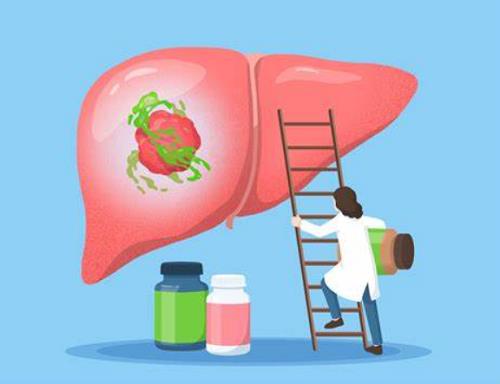
Lithocholic acid as a key calorie-restriction metabolite
CR is a non-pharmacological dietary intervention that induces several metabolic changes, such as alterations in cholesterol, free fatty acid, short-chain organic acid, and vitamin levels. Multiple studies have associated CR with improved lifespan and health status in many organisms, including yeast, mice, flies, nematodes, and primates.Modifications in serum metabolite levels can mitigate age-related conditions, including homeostasis of cellular proteins, oxidative damage, and inflammation. Randomized clinical trials have indicated that CR also improves age-related frailty and diseases, such as insulin resistance, central obesity, dyslipidemia, and muscle deterioration.
CR activates adenosine monophosphate (AMP)-activated protein kinase (AMPK), an enzyme that helps cells maintain energy balance. AMPK regulates several signalling pathways that delay aging, such as forkhead box?O (FOXO) proteins, and rapamycin complex?1 (TORC1). AMPK also induces nicotinamide adenine dinucleotide (NAD+) production that induces transcription factor EB (TFEB), activates sirtuins, and inhibits cyclic adenosine monophosphate response element binding protein (CREB)-regulated transcriptional co-activators.AMPK is associated with many anti-aging-related cellular processes, such as proteostasis, mitochondrial biogenesis, autophagy, mitohormesis, inflammation, and neurodegeneration. Serum analysis revealed that four months of CR treatment in mice (CR serum) activated AMPK in mouse embryonic fibroblasts (MEFs), primary hepatocytes, human embryonic kidney 293T (HEK293T) cells, and primary myocytes. This activation was determined by estimating the phosphorylation levels of AMPKα (pAMPKα) and substrate acetyl coenzyme A carboxylases (pACC).Perfusing CR serum into mice on an ad libitum diet led to the activation of AMPK in the liver and muscle. Experimental findings also indicated the presence of heat-stable and low-molecular-weight metabolites in CR serum that could activate AMPK.Metabolomics and various mass spectrometry-based analyses were conducted on serum samples from CR-treated and non-CR-treated mice. A total of 1,215 metabolites were identified, 695 of which were found to undergo modification in CR serum. Furthermore, compared to the control serum, CR serum exhibited reduced phenylalanine, long-chain fatty acids, and tyrosine levels and increased short-chain fatty acids, bile acids, and acyl-carnitine levels.
Initial screening assays identified six metabolites that could activate AMPK, of which Lithocholic acid activated AMPK at a concentration of one?μM in HEK293T cells, MEFs, primary hepatocytes, and primary myocytes. In addition to AMPK activation, mTORC1 was inhibited, and pACC was increased. Lithocholic acid-treated MEFs exhibited reduced phosphoAMPKα2(S345) levels, along with TFEB translocation into the nucleus.After four months of CR treatment, 1.1?μM of LCA was estimated in serum, which remained stable in mice before and after feeding. Comparatively, 0.3?μM Lithocholic acidwas measured in ad libitum-fed mice. Experimental findings indicated that the CR-induced increase in LCA was independent of muricholate.Lithocholic acid treatment did not induce any change in energy levels in all studied cell types, nor the liver and muscle tissue of CR-treated mice. Lithocholic acid treatment did not activate AMPK through TGR5 in MEFs or cause bulk calcium increases that may induce CaMKK2-mediated AMPK activation. Thus, Lithocholic acid appears to be a specific metabolite in CR serum that activates AMPK at physiological concentrations.
Administration of Lithocholic acid in aged male and female mice for one month revealed improved muscle performance, as demonstrated by a rise in the number of oxidative muscle fibers and reduced glycolytic fibers. This treatment also improved muscle regeneration after damage in aged mice. In Lithocholic acid-treated mice, significant upregulation of plasma glucagon-like peptide 1 (GLP-1) levels was observed.Lithocholic acid-treated aged mice exhibited improvements in running distance, duration, and grip strength. This treatment also alleviated age-associated glucose intolerance and insulin resistance.
References
[1] He, Li-Ming; Li, Chen-Chen; Jiang, Cheng-Yu; Zhang, Jing-Zan; Gu, Xiang-Zhong; Qiu, Wen-Wei[Organic Preparations and Procedures International, 2022, vol. 54, # 4, p. 355 - 362]
[2] Qu, Q., Chen, Y., Wang, Y. et al. Lithocholic acid binds TULP3 to activate sirtuins and AMPK to slow down ageing. Nature (2024).
[3] Qu, Q., Chen, Y., Wang, Y. et al. Lithocholic acid phenocopies anti-ageing effects of calorie restriction. Nature (2024).
- Related articles
- Related Qustion
LITHOCHOLIC ACID
434-13-9You may like
LITHOCHOLIC ACID manufacturers
- LITHOCHOLIC ACID
-
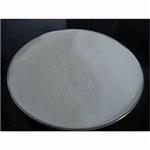
- $6.00 / 1kg
- 2025-02-07
- CAS:434-13-9
- Min. Order: 1kg
- Purity: 99%
- Supply Ability: 2000KG/Month
- LITHOCHOLIC ACID
-
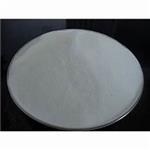
- $6.00 / 1KG
- 2025-02-07
- CAS:434-13-9
- Min. Order: 1KG
- Purity: More than 99%
- Supply Ability: 2000KG/Month
- LITHOCHOLIC ACID
-
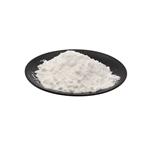
- $5.00 / 1KG
- 2025-02-07
- CAS:434-13-9
- Min. Order: 1KG
- Purity: 99%
- Supply Ability: 20TONS





